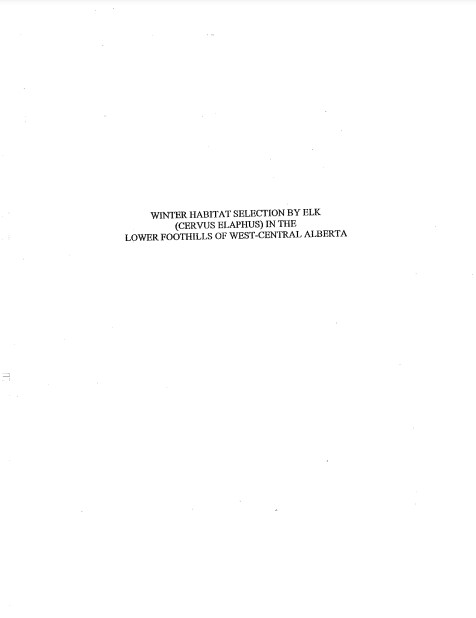Winter habitat selection at three spatial scales by American Elk, Cervus elaphus, in west-central Alberta
Bosque Modelo:
Foothills
Temática:
Conservación
Tipo de documento:
Tesis de postgrado
Resumen
Selection by American Elk (Cervus elaphus) at the landscape (2 nd order), stand (3 rd order), and site level (4 th order) was examined in west-central Alberta from 1 December 1994 to 21 March 1995. At the landscape level, elk home ranges had a lower mean road density, but greater mean unimproved access density. Elk home ranges had smaller mean patch sizes and greater patch density. There was no significant selection on the basis of food and cover composition. At a stand level, elk used the grass/meadow habitat more than expected while all other habitat types were used in proportion to their availability. At a site scale, we attempted to distinguish habitat use for feeding and bedding. Feeding sites had a lower mean percent canopy closure, percent shrub cover, stem density and tree height, but a higher mean percent grass cover than bedding sites. Feeding sites were significantly closer to unimproved access than were bedding sites. Feeding sites had more grass cover and significantly less canopy closure, percent shrub cover, spruce, pine, and fir in the canopy, and lower tree height and stem density than the control plots. They were located significantly closer to unimproved access and farther from hiding cover. Bedding sites had a higher percent grass cover, less spruce, pine and fir in the canopy, and a lower stem density than the control plots. In terms of spatial attributes, elk exhibited no selection when choosing bedding sites. The need to examine habitat selection patterns at more than one scale is discussed.
Información Bibliográfica
Autor:
Jones, PF and RJ Hudson.
Año:
2002
País :
Canadá
Páginas:
-
Idioma:
Ingles
Palabras claves
Model forest, Adaptatation, dynamics, animals





